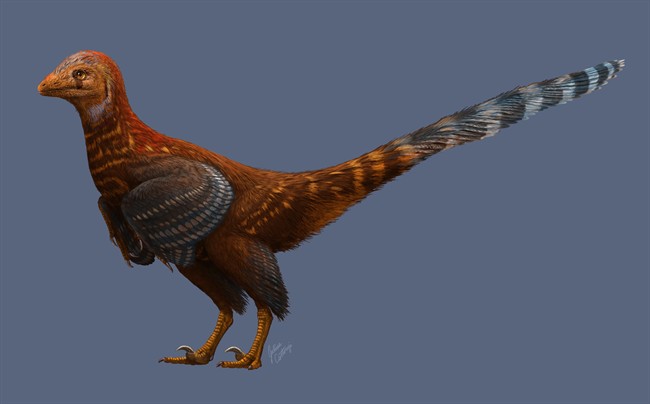The discovery of a new species of bird-like dinosaur is raising questions about the creature’s evolution and why it had feathers when it couldn’t actually fly.

Researchers studying a fossil found in China have determined that Jianianhualong tengi had large feathers associated with aerodynamics, but there’s no evidence that it could get off the ground.
READ MORE: Feathered dinosaurs may have ‘flocked’ together like modern birds: University of Alberta study
Philip Currie, a University of Alberta paleobiologist, said the species is a missing link between birds and dinosaurs.
“Every time you find a missing link between two animals, you create two new missing links,” Currie said. “We’re looking for the answer as to why there’s a combination of primitive and advanced features.”
READ MORE: Scientists may have found the world’s largest dinosaur footprint
The findings of the international research team were published Tuesday in the open-access journal Nature Communications.
An artist’s rendering of the species suggests the metre-long dinosaur resembled a large pheasant with short wings.
The scientists say Jianianhualong tengi lived during the Early Cretaceous period, roughly 125 million years ago, in an area of northeastern China famous for its feathered dinosaurs.
READ MORE: New theory from Alberta researchers for why some dinosaurs stood on 2 feet
Currie said the fossil demonstrates mosaic evolution in which parts of an animal’s skeleton changes without simultaneously affecting other parts.
He said more research is needed to better understand why the dinosaur would have had feathers if they weren’t used for flight.
“The only way to answer these questions is to find more animals to fill in the gaps.”
Currie estimates that only one per cent of all the world’s dinosaurs have been identified to date.

Comments